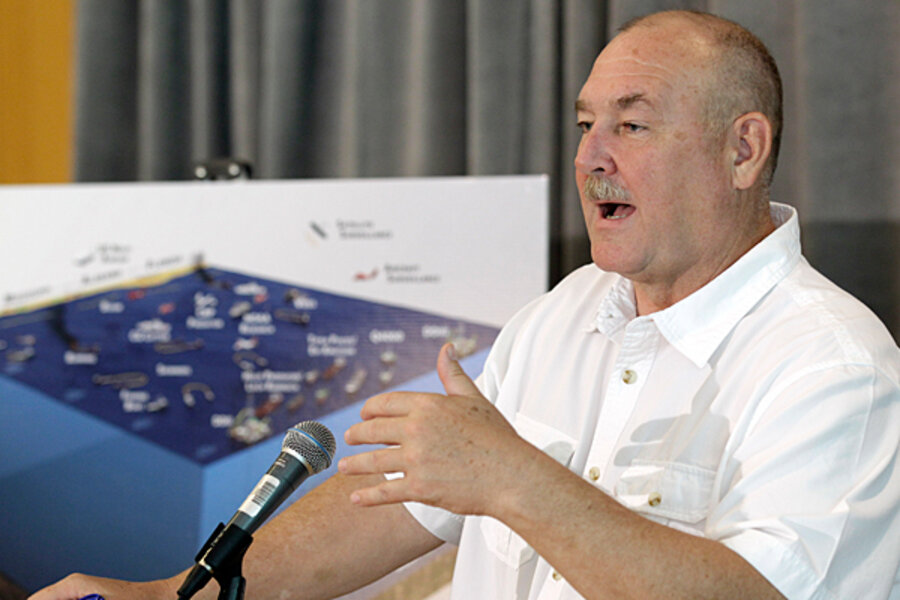Gulf oil spill: US and BP divided over well test
Loading...
An hour after BP said it wanted to start a crucial well-integrity test that could determine whether the British oil giant can permanently shut down the runaway well at the center of the Gulf oil spill drama, retired Adm. Thad Allen, the government's point man for the spill, nixed the gambit Tuesday afternoon.
In part, the decision seemed to reverse the roles of the two uncomfortable partners: BP was itching to move forward to try to stop more leakage, while a large consortium of government scientists dragged its heels, worried about the test making the situation worse.
"I'm disappointed.... [W]e want to move forward as soon as we're ready, but what we don't want to do is move forward with a test that ends up with an inconclusive result," Kent Wells, a BP senior vice president, told reporters Wednesday morning.
IN PICTURES: The Gulf oil spill's impact on nature
A scientific team will meet at noon Central time Wednesday to discuss the test and whether to proceed at another time. In the meantime, BP continues to siphon off about 20,000 barrels (about 840,000 gallons) of oil a day from a well estimated to be blowing between 35,000 and 60,000 barrels into the Gulf every day.
After fitting a new containment cap on the well Monday night, BP had been set to carefully "shut in" a series of valves in and around the modified well superstructure in order to test the integrity of the well itself.
If pressure had subsequently built to 9,000 pounds per square inch (psi), it would indicate the well bore is sound and BP can simply keep the well closed, in effect ending the deep-sea drama. If pressures had stagnated around 6,000 psi, that would mean that the well bore is damaged somewhere below the seafloor.
The disagreement over the test centered on the risks involved: Would data recovered from the test be useful and accurate enough to warrant potentially exacerbating damage in the wellhead, allowing oil to gush into the Gulf from locations where it could not be halted?
Scientists are worried that the sinking of the Deepwater Horizon rig on April 22, after the April 20 explosion, may have damaged cement-well walls below the failed blowout preventer at the bottom of the Gulf.
"We want to make sure there's absolute clarity – that this is the right test that gives us the most information, minimizes risk so we know the best path forward to shut in the well or go to containment, and what it will mean for the kill with the relief wells," Mr. Wells said. "As much as we want to do things as soon as possible, we want to make sure they're done absolutely correct."
Meanwhile, BP has begun testing a third containment vessel at the surface. Even if the well-integrity test were to fail and the flow of oil cannot be checked, BP expects to be able to contain up to 80,000 barrels a day in a few weeks. The well itself is leaking up to 60,000 barrels of oil a day, according to government estimates.
The decision by Allen to nix the test pushed back final drilling for the relief wells by at least "a couple of days," Wells said. The relief wells are set to execute a "bottom kill" by injecting heavy mud into the well pipe some 17,000 feet below the seabed.
IN PICTURES: The Gulf oil spill's impact on nature
Related:





